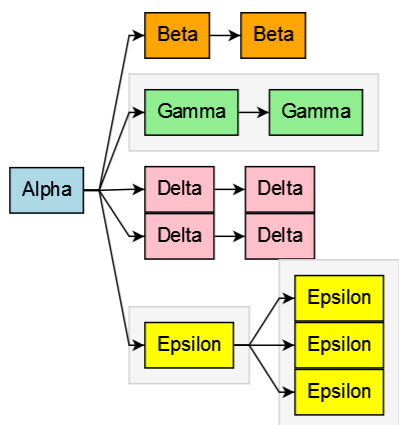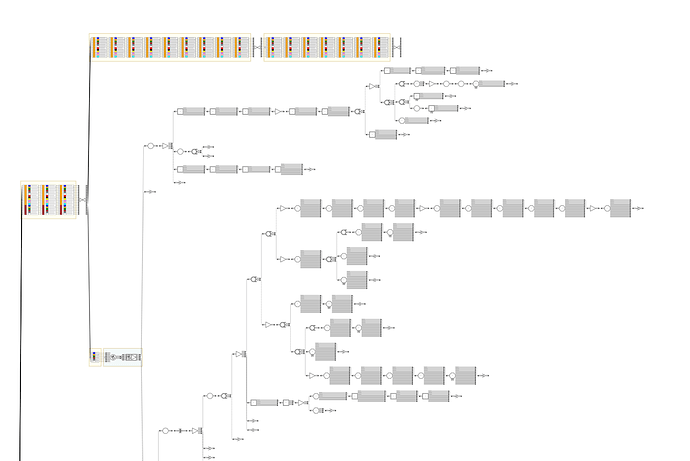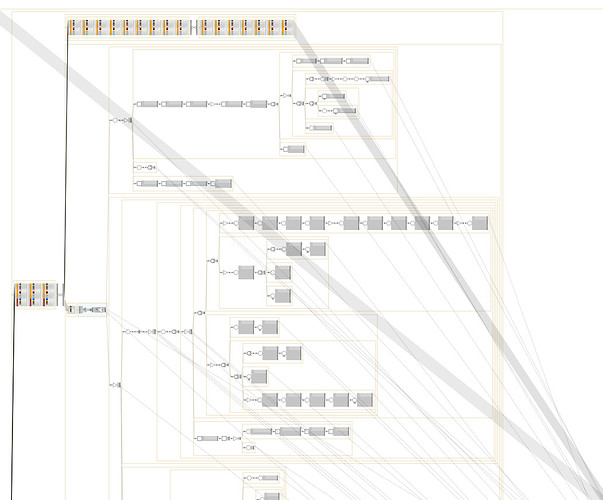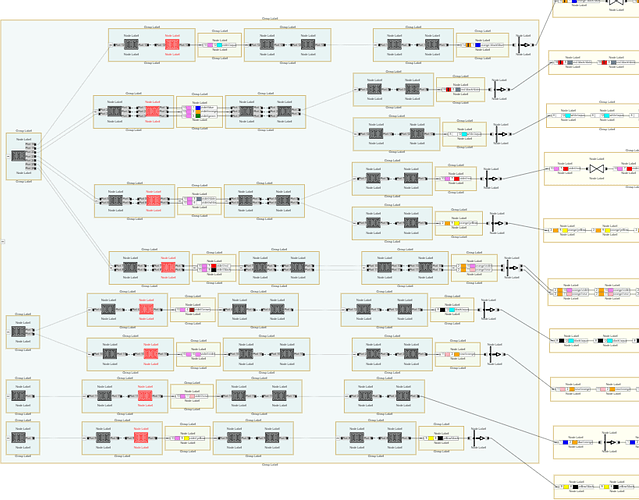This example intentionally sets TreeLayout.nodeSpacing to zero and TreeLayout.layerSpacing to 20, as reasonable minimum values, so that you can see the artificial spacing created by the override of TreeLayout.assignTreeVertexValues.
function init() {
const $ = go.GraphObject.make;
myDiagram =
$(go.Diagram, "myDiagramDiv",
{
layout: $(go.TreeLayout,
{
nodeSpacing: 0, // to demonstrate making more room for a child inside a different group
layerSpacing: 20,
assignTreeVertexValues: function(v) {
if (this.angle !== 0) return;
const par = v.parent;
if (v.node) {
const group = v.node.containingGroup;
// increase height of vertex if the next sibling is in a different group
if (par) {
const arr = par.children;
const idx = arr.indexOf(v);
if (idx < arr.length-1) {
const sib = arr[idx+1];
if (sib.node && sib.node.containingGroup !== group) {
v.height += 20;
}
}
}
// increase width of vertex if there are any children in a different group
const children = v.children;
let diff = false;
for (let c of children) {
if (c.node && c.node.containingGroup !== group) {
diff = true;
break;
}
}
if (diff) v.width += 20;
}
}
})
});
myDiagram.nodeTemplate =
$(go.Node, "Auto",
//{ width: 100, height: 50 },
$(go.Shape,
{ fill: "white", portId: "", fromLinkable: true, toLinkable: true, cursor: "pointer" },
new go.Binding("fill", "color")),
$(go.TextBlock,
{ margin: 8, editable: true },
new go.Binding("text").makeTwoWay())
);
myDiagram.groupTemplate =
$(go.Group, "Auto",
{ layout: null },
$(go.Shape, { fill: "whitesmoke", stroke: "lightgray" }),
$(go.Placeholder, { padding: 10 })
);
myDiagram.model = new go.GraphLinksModel(
[
{ key: 1, text: "Alpha", color: "lightblue" },
{ key: 2, text: "Beta", color: "orange" },
{ key: 22, text: "Beta", color: "orange" },
{ key: 3, text: "Gamma", color: "lightgreen", group: -1 },
{ key: 33, text: "Gamma", color: "lightgreen", group: -1 },
{ key: 4, text: "Delta", color: "pink" },
{ key: 44, text: "Delta", color: "pink" },
{ key: 41, text: "Delta", color: "pink" },
{ key: 414, text: "Delta", color: "pink" },
{ key: 5, text: "Epsilon", color: "yellow", group: -2 },
{ key: 55, text: "Epsilon", color: "yellow", group: -3 },
{ key: 56, text: "Epsilon", color: "yellow", group: -3 },
{ key: 57, text: "Epsilon", color: "yellow", group: -3 },
{ key: -1, isGroup: true },
{ key: -2, isGroup: true },
{ key: -3, isGroup: true },
],
[
{ from: 1, to: 2 }, { from: 2, to: 22 },
{ from: 1, to: 3 }, { from: 3, to: 33 },
{ from: 1, to: 4 }, { from: 4, to: 44 },
{ from: 1, to: 41 }, { from: 41, to: 414 },
{ from: 1, to: 5 }, { from: 5, to: 55 }, { from: 5, to: 56 }, { from: 5, to: 57 },
]);
}






